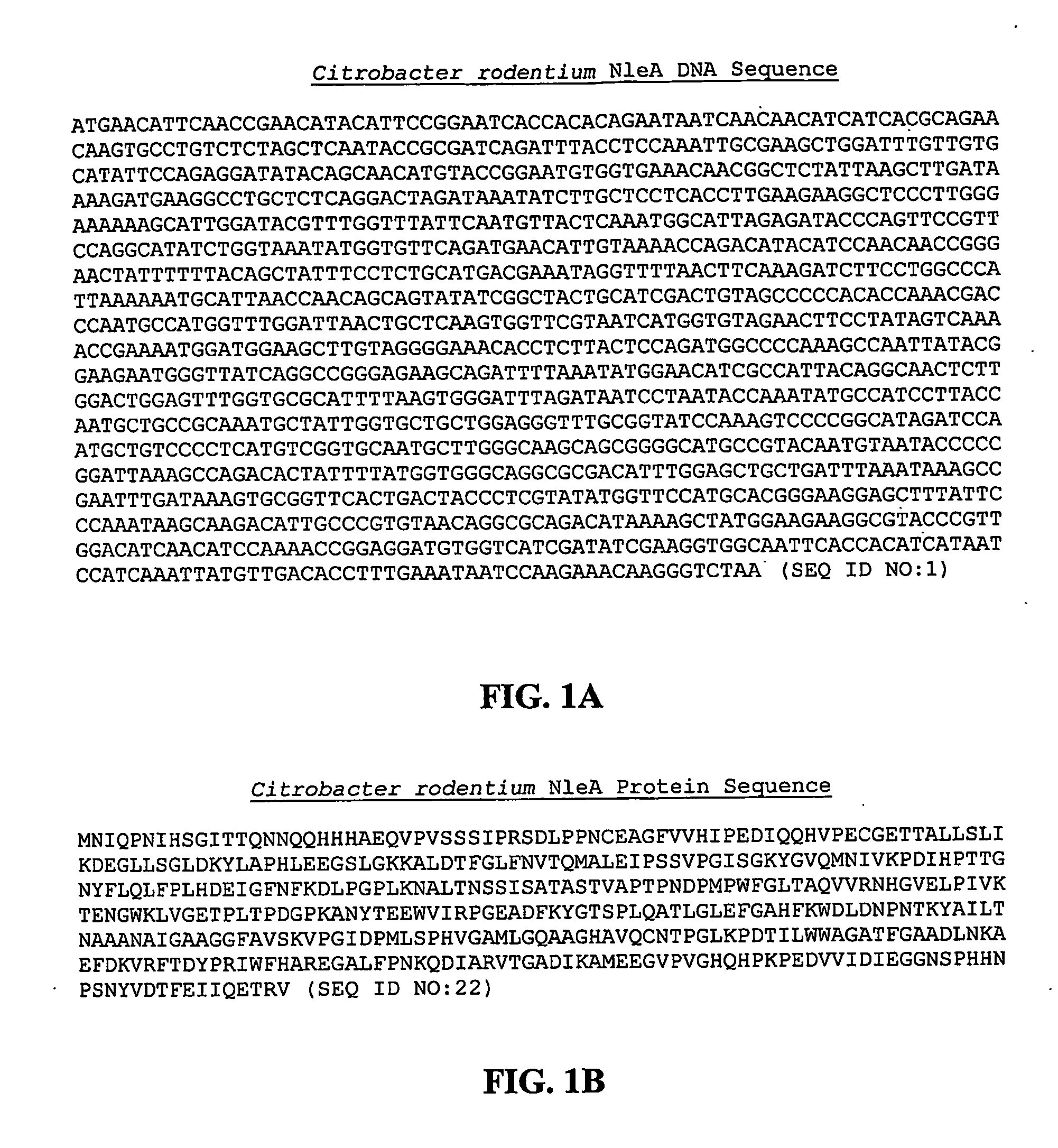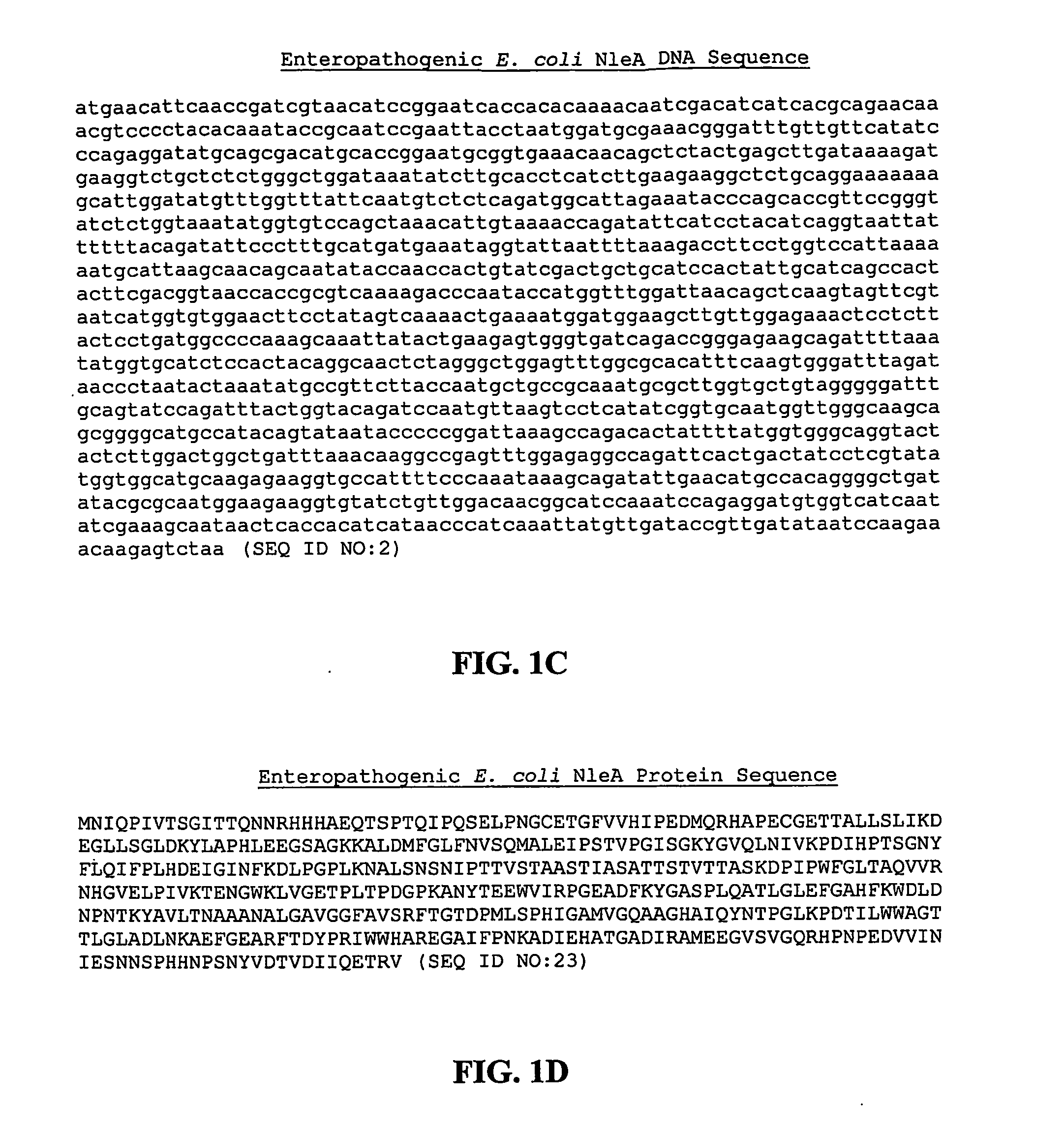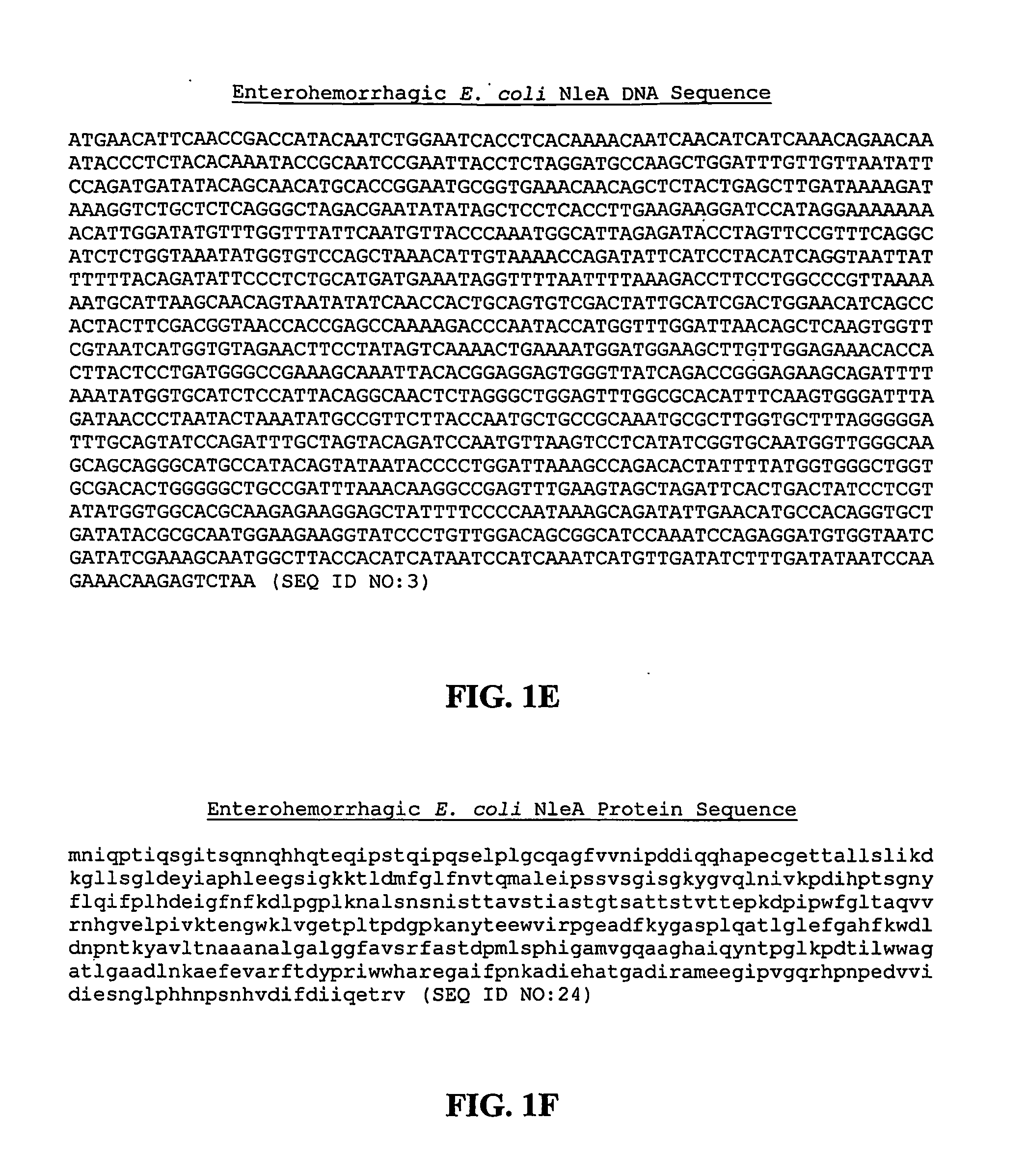Bacterial virulence factors and uses thereof
a technology of virulence factors and bacteria, applied in the field of bacteria pathogens, can solve the problems of epec, a major endemic health threat to young children, and a large number of children killed by epec, and achieve the effect of reducing the shedding or colonization of an a/e pathogen
- Summary
- Abstract
- Description
- Claims
- Application Information
AI Technical Summary
Benefits of technology
Problems solved by technology
Method used
Image
Examples
example 1
[0167] Generation of Mutants
[0168] Bacterial strains used are as follows: EHEC O157:H7 strain 86 / / 24 (32), EHEC EDL933 (wildtype E. coli O127:H7 isolate; 3); EHEC escN- (47), wild type EPEC E2348 / 69 (wildtype E. coli O127:H6 isolate; 50), C. rodentium DBS100 (ATCC 51459; 53), REPEC 0103:K-:H2 85 / 150 (52), E. coli HB101.
[0169] Plasmids used were as follows:
PlasmidDescription and Relevant PhenotypeReferencepRE118sacB-based suicide vector for allelic exchange, Kanr4pKD46Plasmid expression λ red recombinase, AMPr5pACYC184Cloning Vector, CMr TetrNEBpCR2.1-TOPOPCR cloning vector, Ampr KanrInvitrogenpTOPO-2HApCR2.1-TOPO based, Plac-driven expressioncassette for C-terminal 2HA tagging, Ampr KanrpCRespG-2HA / BglIIpACYC184 based, Citrobacter espG promoter-drivenexpression cassette for C-terminal 2HA tagging CmrpCR1erC. rodentium ler in pCR2.1-TOPOpCRorf11C. rodentium orf11 / grla in pCR2.1-TOPOpEHorf11EHEC orf11 / grlA in pCR2.1-TOPOpEPorf11EPEC orf11 / grlA in pCR2.1-TOPOpKK232-8pBR322 derivati...
example 2
Analysis of Regulation of LEE Gene Expression
[0207] To address which genes in the LEE regulate LEE gene expression in C. rodentium, we analyzed LEE mutants for expression of EspB and Tir, which are encoded by the LEE4 and LEE5 (Tir) operons, respectively. Total cell lysates of bacteria grown in DMEM were analyzed by Western blot with anti-Tir and anti-EspB sera. Our results confirmed Ler's essential role in LEE expression, since no Tir and EspB were produced in Δler. As expected, Δtir and ΔespB did not produce Tir and EspB, respectively. No Tir was visible in ΔcesT, consistent with CesT's role as the chaperone for Tir stability and secretion (18, 19). Surprisingly, another LEE-encoded protein, Orf11, was also required for the expression of Tir and EspB. Expression of Tir and EspB in Δorf11 was complemented by a plasmid carrying only Citrobacter orf11 (FIG. 8). The orf11 gene is highly conserved among A / E pathogens, and both EHEC and EPEC orf11 complemented Citrobacter Δorf11 (FIG. ...
example 3
Identification of Effectors Secreted by LEE-Encoded TTSS
[0211] A / E pathogens secrete several proteins into tissue culture or minimal media, but the secreted proteins are predominantly the translocators EspA, EspB, and EspD. Secreted proteins were concentrated by TCA precipitation from supernatants of bacterial cultures grown in DMEM and analyzed by 12% SDS-PAGE followed by Coomassie Blue staining. C. rodentium carrying a plasmid containing orf11 / grlA secreted at least 300% more EspA, EspB, and EspD than the WT strain.
[0212] To define the effectors encoded by the Citrobacter LEE, we tagged various LEE-encoded proteins that are not involved in TTS and host cell adhesion with a double hemaglutinin (2HA) epitope at the carboxy terminus, and analyzed their secretion in WT and mutant C. rodentium. Only Tir, EspG, EspF, EspH, and Map were secreted by the LEE-encoded TTSS in C. rodentium, suggesting that the LEE encodes only 5 effectors. A previously unrecognized 54 kDa protein (p54) was ...
PUM
| Property | Measurement | Unit |
|---|---|---|
| Fraction | aaaaa | aaaaa |
| Fraction | aaaaa | aaaaa |
| Composition | aaaaa | aaaaa |
Abstract
Description
Claims
Application Information
 Login to View More
Login to View More - R&D
- Intellectual Property
- Life Sciences
- Materials
- Tech Scout
- Unparalleled Data Quality
- Higher Quality Content
- 60% Fewer Hallucinations
Browse by: Latest US Patents, China's latest patents, Technical Efficacy Thesaurus, Application Domain, Technology Topic, Popular Technical Reports.
© 2025 PatSnap. All rights reserved.Legal|Privacy policy|Modern Slavery Act Transparency Statement|Sitemap|About US| Contact US: help@patsnap.com



